“The only way we can heal is to be together”
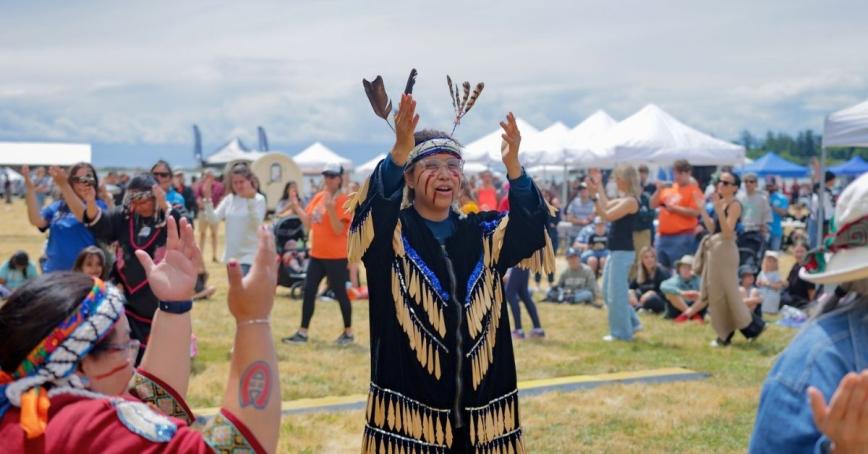
On the eve of National Indigenous Peoples Day, a crowd gathered along the shores of Esquimalt Lagoon — including hundreds of school children — to witness a traditional canoe protocol, a practice that has been carried out for generations on these lands and waters.
“When I think of National Indigenous Peoples Day, I think about age-old traditions such as canoeing,” said Bradley Dick (Yuxwelupton Qwal’ qaxala) a contemporary artist of of lək̓ wəŋən, Mamalilikulla and Ditidaht ancestry. “Of course, the ocean was our highway, it was our grocery store, it was our unconditional teacher for many of our communities,” Dick said to the crowd gathered on traditional Lands of the Lekwungen-speaking Peoples, the Songhees and Esquimalt Nations for the for the annual celebration at Royal Roads University.
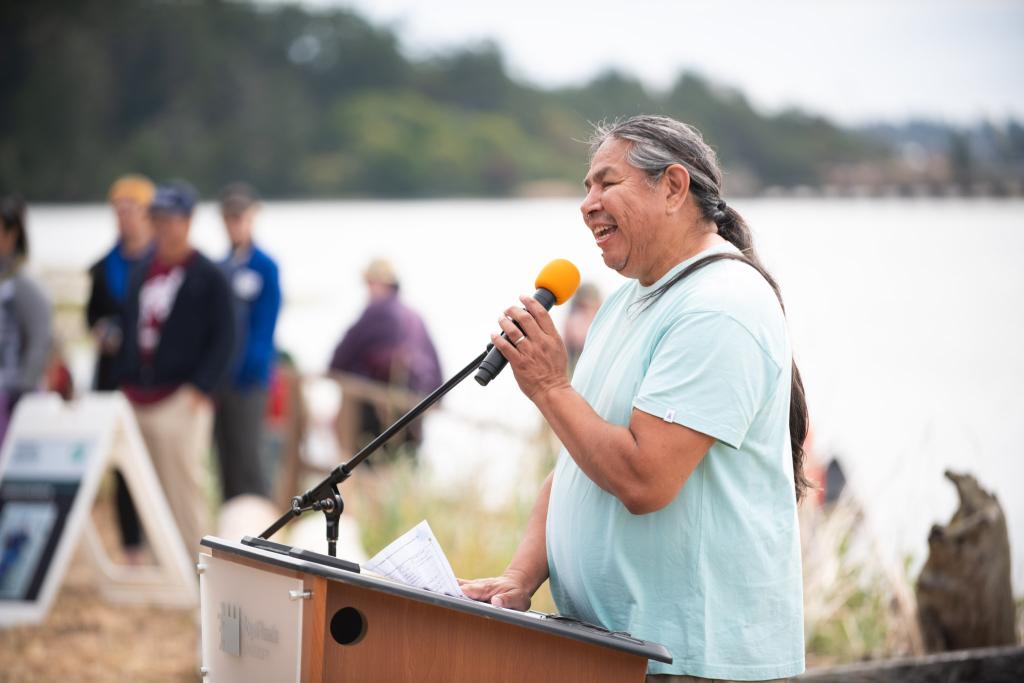
Bradley Dick, emcee for the canoe landing protocol practice, addressed a crowd of attendees, including students from across the region.
One by one, 16 canoe families, including the Ministry of Indigenous Relations and Reconciliation, local municipal governments and partner post-secondary institutions, requested permission to come ashore.
“It’s good to understand and know that this is something that’s been done for hundreds if not thousands of years in our communities,” Dick explained. “Our communities were very intentional with the way they traveled. This protocol ensured that they were arriving into someone else’s space in a respectful and in a safe way.”
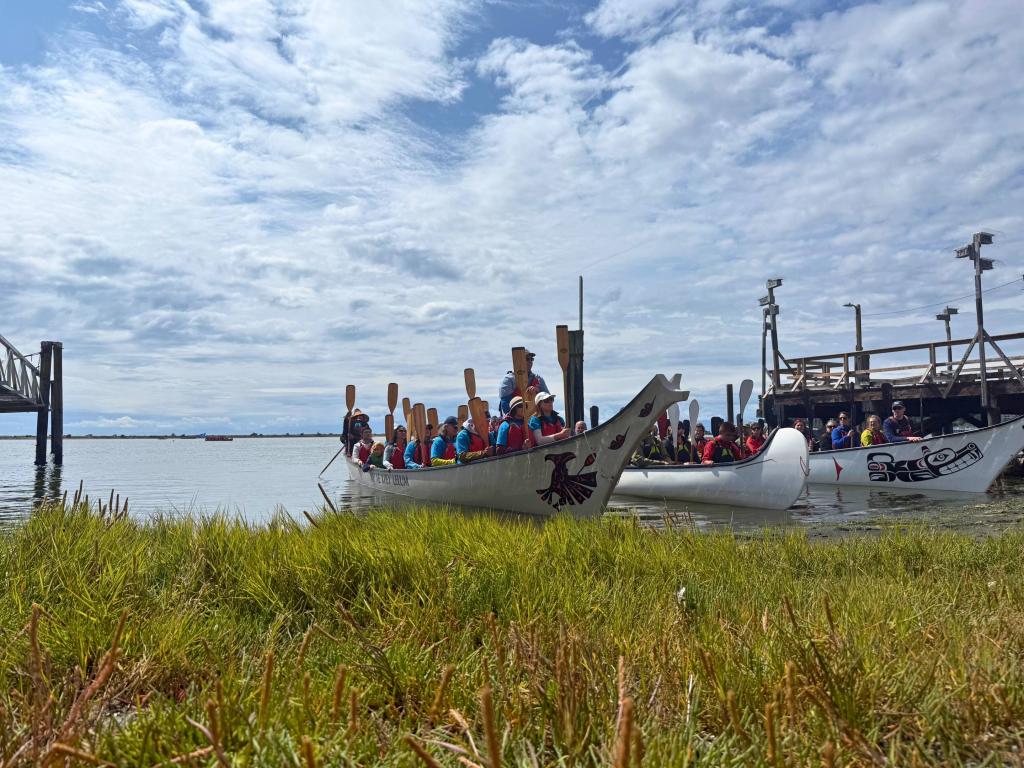
One by one, 16 canoe families, including the Ministry of Indigenous Relations and Reconciliation, local municipal governments and partner post-secondary institutions, requested permission to come ashore.
First-time attendee Ja’Lanie Charles said she enjoyed witnessing the canoe protocol practice and paddle song that opened a full day of crafts, field games, cultural presentations and performances.
“It’s just nice to see non-Indigenous people and children to learn and witness everything,” she said.
Her cousin, Danny Charles, called the annual gathering “empowering,” noting how meaningful it was to be surrounded by so many members of the community.
For Danny, attending each year is a way to honour their ancestors and connect with Elders who walk with them today.
“My favourite part of the day is sitting with Elders,” Danny said. “You hear their stories and what they used to go through.”
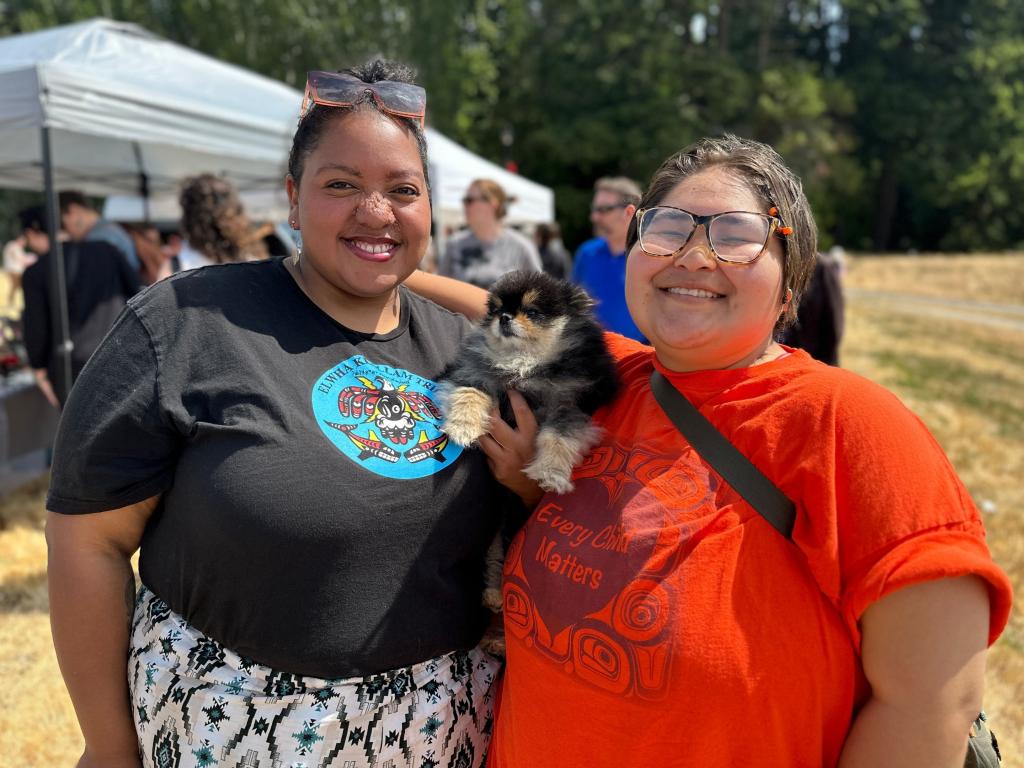
Cousins Ja’Lanie (left) and Danny Charles pause to stroll by the Indigenous Artists and Vendors Market.
Co-hosted by 20 regional partners, the annual event, attracting upwards of 6,000 people, offered a vibrant showcase of Indigenous cultural heritage, including music, food, activities and opportunities for connection.
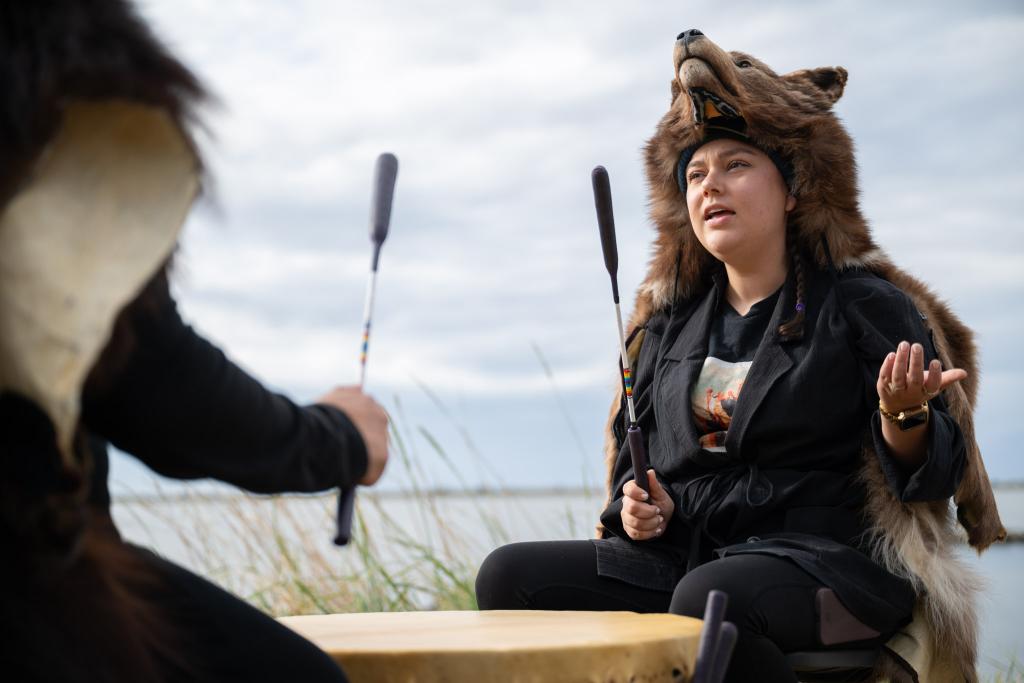
ANSWER2 drummers perform after arriving by canoe on shore.
Ten partner teams competed in the The Swutth’tus (Max Henry Sr.) Canoe Challenge, which is a race to the shore while navigating tight turns along the course. The Métis Nation of Greater Victoria canoe family won first place in the small canoe category and the Tl’ches Spirit canoe family in the large canoe category.
For the first time this year, School District 61 offered attendees the chance to witness and try their hand at Lahal – an Indigenous guessing game widely played in Indigenous communities across North America.
The game, also known as the bone game, involves two teams – one which conceals bone game pieces with their hands and the other which tries to win scoring sticks by guessing the location of the one, solid bone piece, explained John Harris, School District 61 District Elders & Indigenous Knowledge Facilitator.
“For people who aren’t familiar with Lahal, it’s a great introduction into Indigenous activity, Indigenous worldview,” he said.
“Students that we teach this to, within half an hour, they’re laughing and getting really animated. All the way from little kids all the way up to Elders, it’s just a game that’s so inclusive and it brings people together and that’s what I really love about it.”
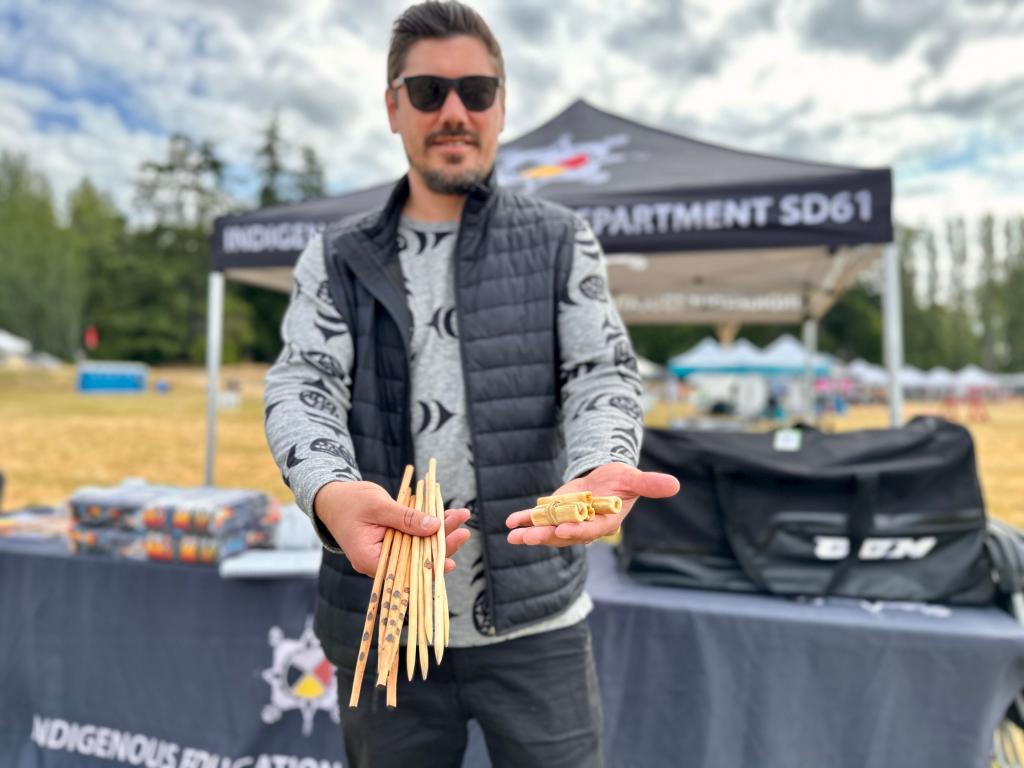
John Harris, School District 61 District Elders & Indigenous Knowledge Facilitator shows off Lahal bone game pieces and sticks, used for keeping score.
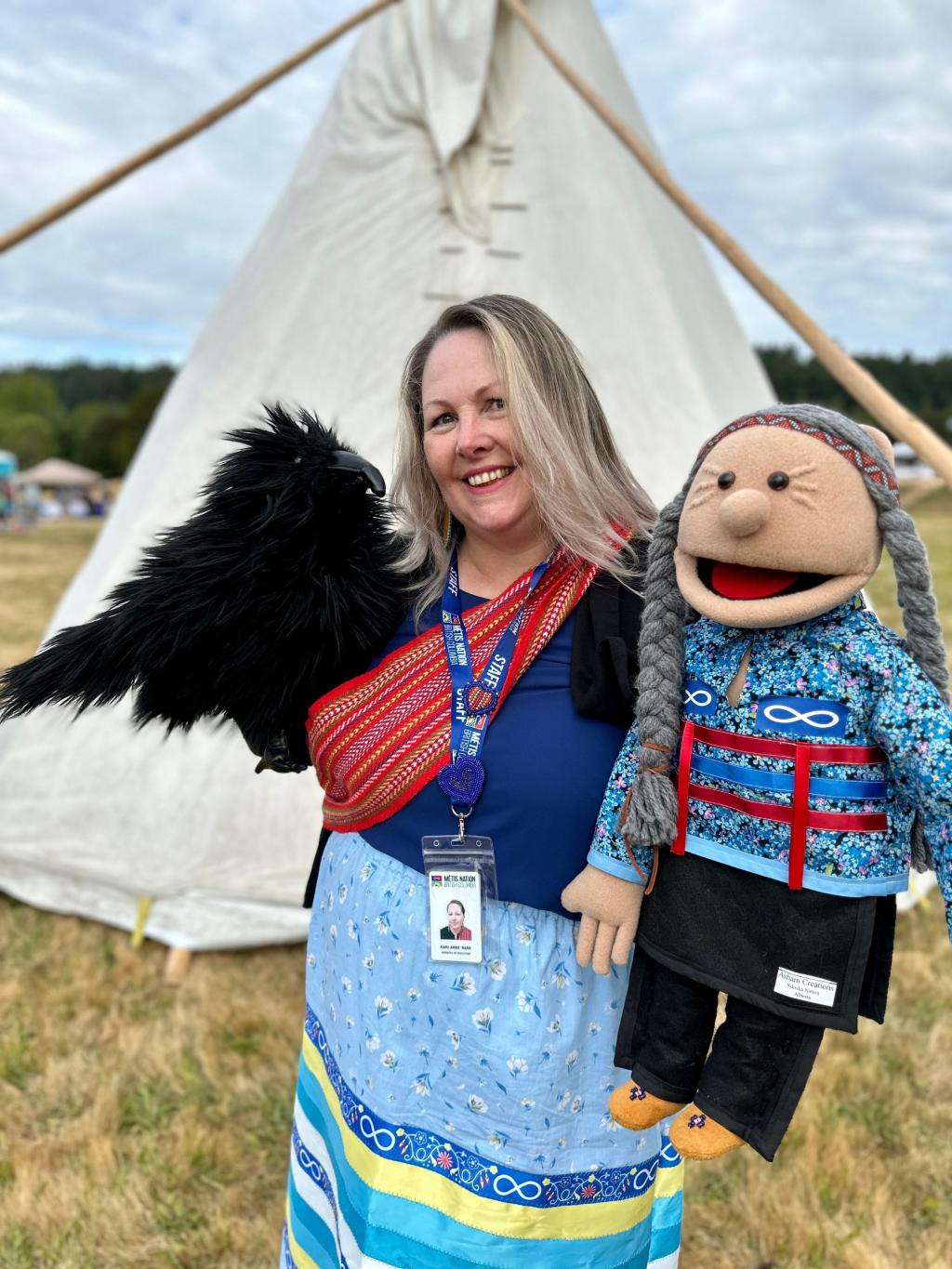
The opportunity to share cultural knowledge, teachings and opportunities for connection is what this event is all about, said Kari-Anne Barr, Métis Nation British Columbia pedagogist.
In part, her role is to work with childcare centers to educate about Métis culture and history, something she notes is a challenge for some families due to the effects of colonization and residential schools.
“So when we create events like this, it’s a coming together of cultures, it’s a coming together of ages and genders and ideas and connecting with the lands here,” Barr said. “We’re making a difference in the way children are experiencing the world and that’s doing the heart work. We all come with our own pasts and the only way that we can heal is to be together.”
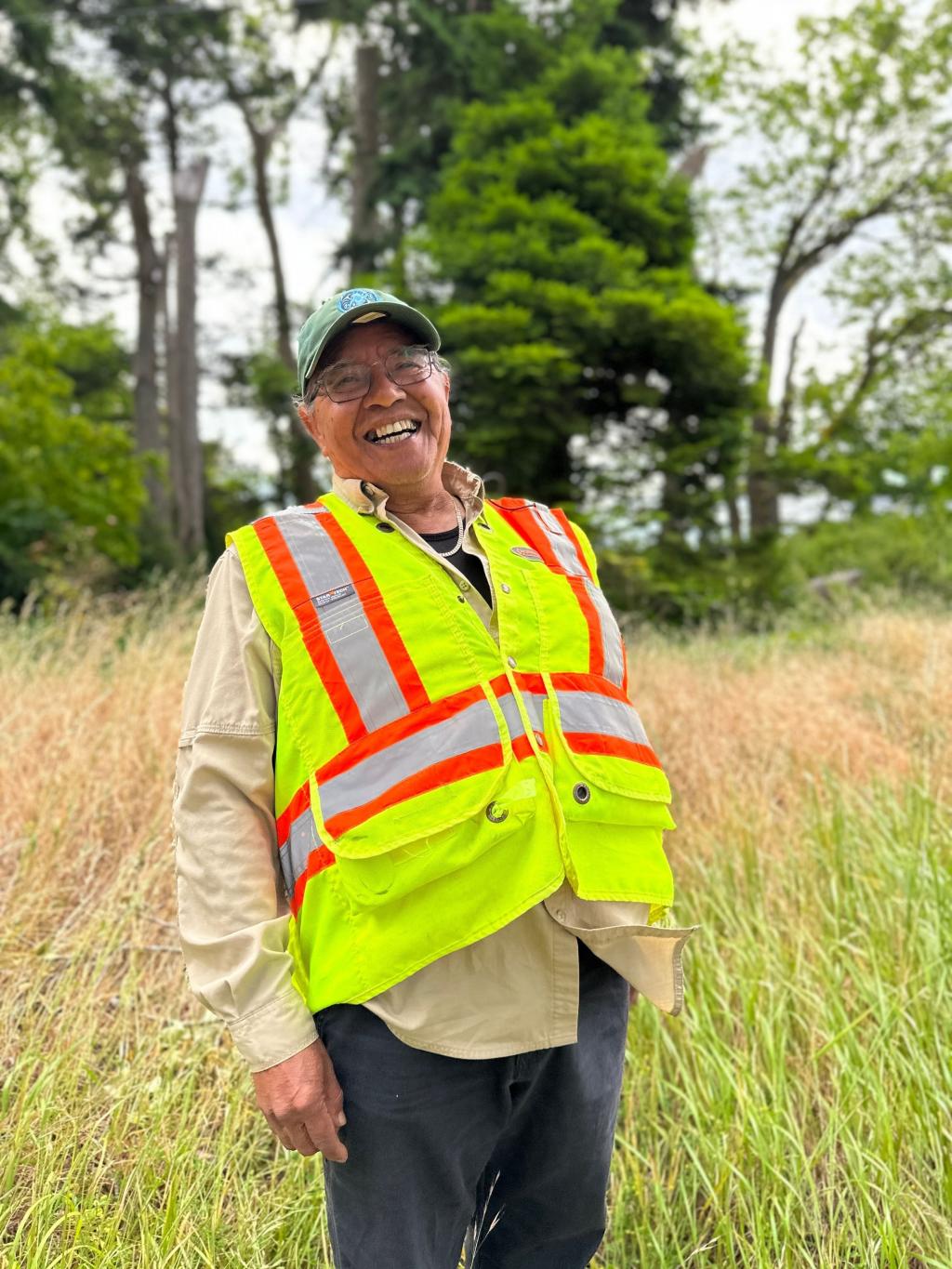
That sense of interconnection — between people, place and future generations — was shared by Cowichan Elder and ethnobotanist Kenneth Elliott. Throughout the day, he led groups on traditional plant walks along Charlie’s Trail.
“In my lifetime, I’ve watched the health of Mother Earth gently sliding down hill,” he said, noting we’re not yet past the point of no return.
“I think the most powerful things I offer is the historical, spiritual link that our ancestors had with the forest. The teachings would teach us to love, honour and respect everything out there as a living being and as one of our relations so that’s the big thing I try to impress on everyone,” he said.
Importantly, he notes that each one of us need not go back more than a few generations to find an ancestor who did the same.
“It doesn’t matter where you come from in the world, all of our ancestors at some point used to go to the forests and harvest foods and medicines and tools, just like the First Nations Peoples. So we share that common past where mother nature did look after all of us.”